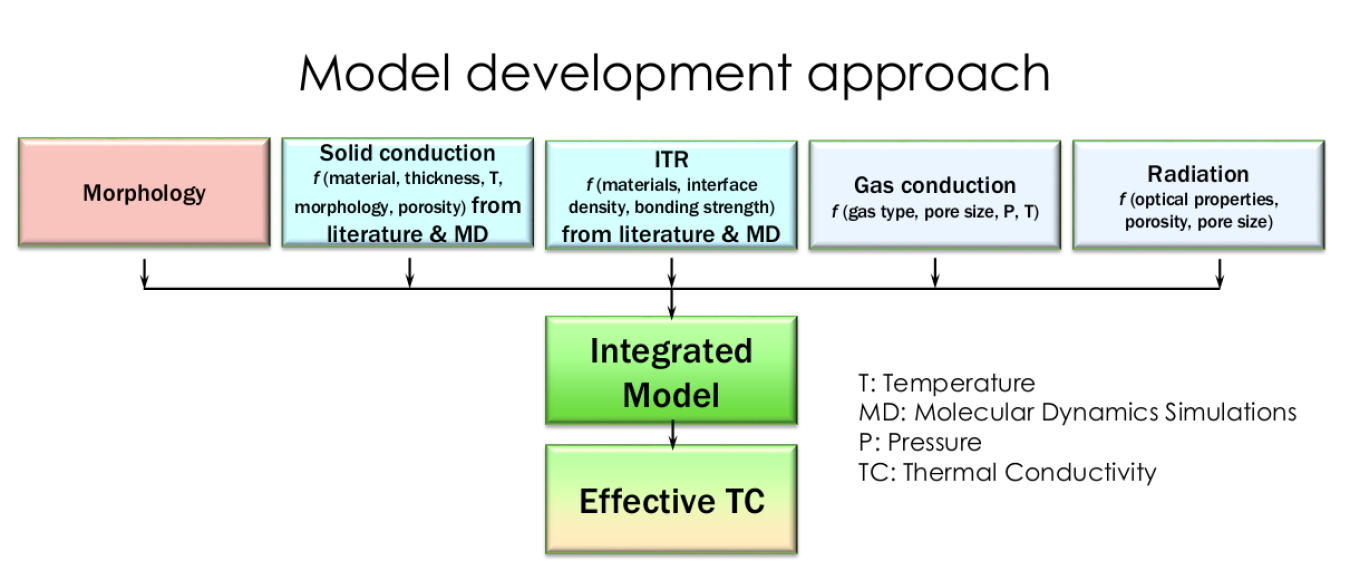Lead Performer: Oak Ridge National Laboratory (ORNL) – Oak Ridge, TN; partner: Vanderbilt University – Nashville, TN
May 7, 2019
Lead Performer: Oak Ridge National Laboratory (ORNL) – Oak Ridge, TN
Partner: Vanderbilt University – Nashville, TN
FY19 DOE Funding: $350,000
Project Term: October 1, 2018 – September 30, 2021
Funding Type: Lab Award
Project Objective
DOE’s Building Technologies Office (BTO) is seeking to develop insulation technologies that have a thermal resistance that is greater than R14 per inch and are suitable for both retrofitting existing buildings and new construction. Numerous institutions are exploring multiple methods to develop insulation materials that meet these requirements. However, their approaches rely on simplified models and trial and error that is generally costly and slow.
The objective of this project is to develop models to predict effective thermal resistance of very low thermal conductivity materials that guide researchers through the development of new insulation materials. The new models will capture thermal transport phenomena at the micro and nanoscale, including subcontinuum thermal transport and interfacial thermal resistance, which are vital to understanding insulation materials with low thermal conductivity. The team’s approach is based on improvements to existing models, and validation and calibration of new models using empirical data from the literature and new data generated for this project.
Project Impact
This project will develop models that support researchers throughout the development of new insulation materials. The models will allow parametric studies that identify optimum design options for insulation materials and thus accelerate achieving BTO’s goal of developing insulation technologies with thermal resistance greater than R14 per inch.
Contacts
DOE Technology Manager: Sven Mumme
Lead Performer: Som Shrestha, Oak Ridge National Laboratory
Related Publications
Shrestha, S., Rai, A., Feng, T., Zhang, M., Hun, D., Biswas, K., Desjarlais, A. 2019. Review of Models to Evaluate and Guide the Development of Low Thermal-Conductivity Materials. Submitted to the Buildings XIV International Conference.

